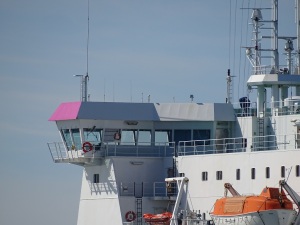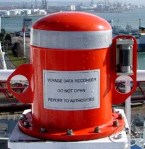Adequate and up to date, the two important features that SOLAS V demands of charts and publications. This post looks at that requirement in more detail, and also introduces a new book in the ‘Really Handy Guide’ range of Kindle Revision aids.
 SOLAS V Regulation 27 – Nautical Charts and Nautical Publications
SOLAS V Regulation 27 – Nautical Charts and Nautical Publications
What are the requirements for the carriage of nautical charts and publications according to SOLAS V?
Nautical charts and nautical publications necessary for the intended voyage, shall be:
- Adequate
- Up to date
Note: Flag states can have some flexibility in defining which ships have to comply with this Regulation. In the case of UK flagged ships it applies to all ships except for pleasure vessels of less than 150 gt.
What type of publications does this refer to?
Sailing directions, lists of lights, notices to mariners, tide tables and all other nautical publications.
A definition from the regulations
“Nautical chart” or “nautical publication” is a special-purpose map or book, or a specially compiled database from which such a map or book is derived, that is issued officially by or on the authority of a Government, authorized Hydrographic Office or other relevant government institution and is designed to meet the requirements of marine navigation.” Regulation 2
What SOLAS Regulation states the carriage requirements for charts and nautical publications?
Where can I find some useful guidance on the carriage and use of Nautical Charts and Publications?
In Annex 3 to the UK guidance to SOLAS V.
Guidance on the use of Electronic Charts is contained in ANNEX 14.

UK guidance on the updating of electronic charts
Within the UK MCA SOLAS V guidance is a section on the updating of electronic charts, here is a summary of the key points.
- Updates available in port should be applied before passage planning commences and before leaving port.
- If updates are received at sea they should be applied as soon as possible.
- Any changes relevant to the execution of the passage plan should be noted on the passage plan
- Updates need to be applied to both primary and secondary systems
- Records should be kept of when updates are received and applied
- During passage planning it should be checked that any licences concerning the use of the software and its updates will remain valid for a period in excess of the expected worst-case voyage duration. If this is not the case corrective action needs to be taken.
 The Latest Handy Guide Revision aid has just been published
The Latest Handy Guide Revision aid has just been published
A Really Handy Guide to Ship Certification
Part 4
Keeping the seas clean
This is a guide for the professional mariner studying for their officer qualifications; it mixes facts about the certificates, revision questions, and then adds a bit more. It covers the ship ship certification associated with environmental protection; certification that includes the IOPP, NLS, IAPPC, IEE, anti-fouling certification and Ballast water convention certification.

 carry the International Code of Signals. This means all passenger ships, and all cargo ships of 300 GT and over, when engaged on international voyages,
carry the International Code of Signals. This means all passenger ships, and all cargo ships of 300 GT and over, when engaged on international voyages,



 For Electromagnetic Compatibility standards refer to
For Electromagnetic Compatibility standards refer to 

 is considered by the master to compromise the safety or security of the ship. In such a case, the master shall inform the Administration without undue delay and make an entry in the record of navigational activities and setting out the reasons for the decision and indicating the period during which the system or equipment was switched off.
is considered by the master to compromise the safety or security of the ship. In such a case, the master shall inform the Administration without undue delay and make an entry in the record of navigational activities and setting out the reasons for the decision and indicating the period during which the system or equipment was switched off.
 SOLAS V Regulation 16-Maintenance of equipment.
SOLAS V Regulation 16-Maintenance of equipment.
 Another SOLAS V Regulation, and another regulation on steering gear. This one covers what used to be called the ‘Auto Pilot’, before technology gave us many variations to play with.
Another SOLAS V Regulation, and another regulation on steering gear. This one covers what used to be called the ‘Auto Pilot’, before technology gave us many variations to play with.
 SOLAS-Regulation 18 – Approval, surveys and performance standards of navigational systems and equipment and voyage data recorder
SOLAS-Regulation 18 – Approval, surveys and performance standards of navigational systems and equipment and voyage data recorder















 2012
2012

